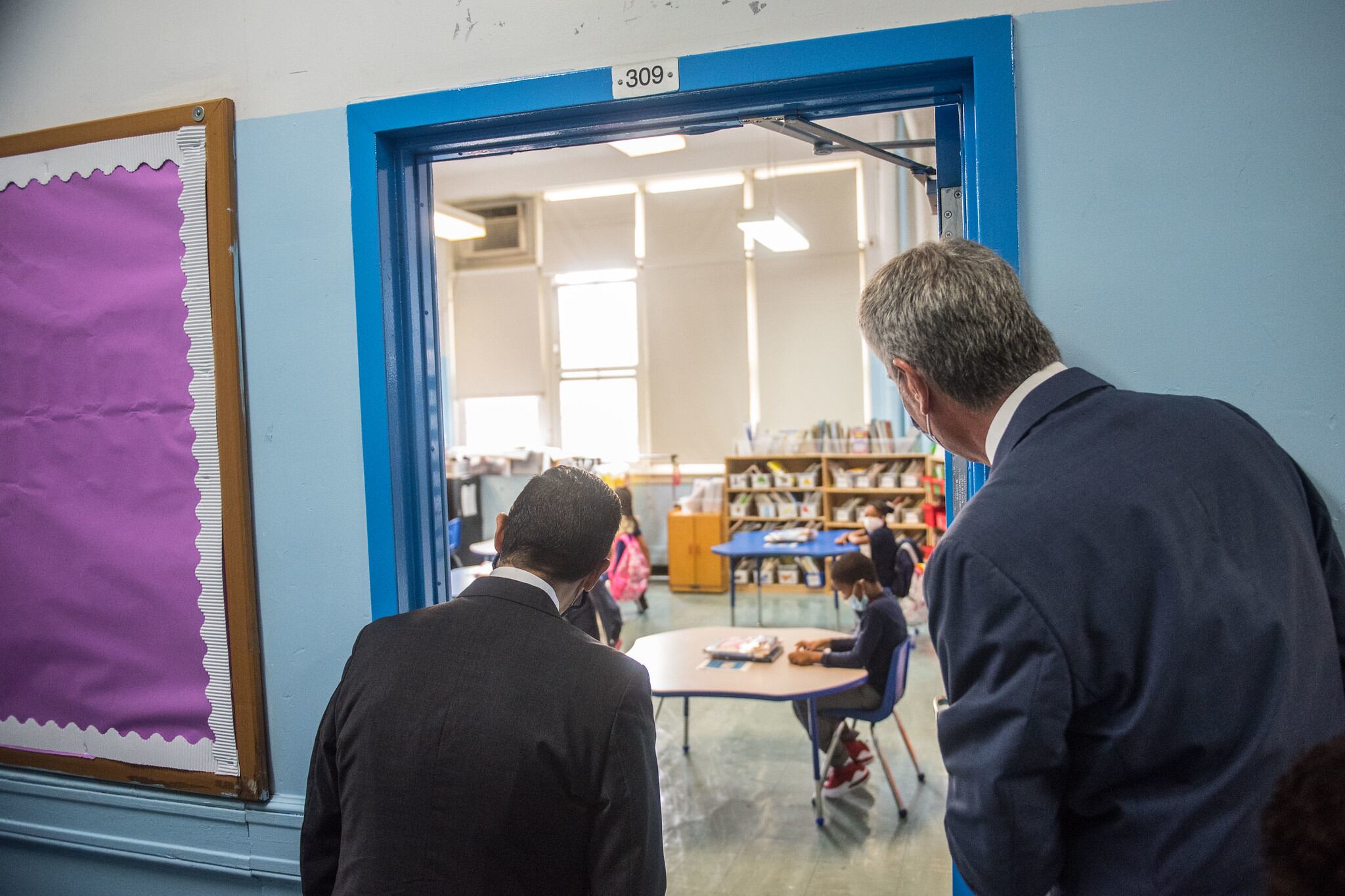In-person learning will continue on Monday as New York City teeters on the edge of another citywide shutdown of school buildings.
All of the city’s roughly 1,600 district schools will be required to switch to fully remote learning the day after the citywide coronavirus positivity rate reaches 3% over a seven-day average, city officials have said. That positivity rate has been creeping upward in recent weeks, but the rate on Sunday was 2.57%, still below the city’s threshold.
“Thankfully, schools will remain open on Monday, but we have to keep fighting back with everything we’ve got,” Mayor Bill de Blasio tweeted.
The majority of the city’s district school students are already learning remotely full time. About 280,000 students — or less than a third of the district’s enrollment — have attended in-person classes at least once this school year. Due to social distancing requirements, most students who attend class in-person are doing so between one and three days a week.
De Blasio previously indicated that increasing infection rates could force citywide school building closures as soon as this week. But the decision to automatically revert to fully virtual instruction after the 3% threshold is reached has drawn fresh scrutiny, including from parents who believe school buildings can continue to safely operate, as well as Gov. Andrew Cuomo.
Cuomo suggested on Saturday that the city’s trigger for closing schools was too strict and that officials should consider infection rates within schools.
“Add to your calculus, a positivity rate in the school,” Cuomo said, according to Gothamist. “Because if the school is not spreading the virus, or if the school has a much lower positivity rate than the surrounding area, then the school is not part of the problem. And you could argue keeping the children in the school is part of the solution rather than the children spending time on the street in the neighborhood where the infection rate is higher.”
Those comments contrast sharply with an argument Cuomo made as recently as last month that schools could be “mass spreaders” of the coronavirus. He did not cite any evidence for that claim and random testing in New York City schools showed just .19% positivity out of almost 124,000 tests conducted. City schools are required to test 10-20% of students and staff on a monthly basis.
It was not immediately clear if the governor would take any specific action to intervene, though he has previously contradicted or second-guessed de Blasio concerning school closures and has the final say over the matter. The state’s threshold for closing schools is 9% positivity rate over seven days, far less conservative than the city’s 3% threshold, though state officials previously approved the city’s 3% trigger. The 3% threshold does not apply to charter or private schools.
Although de Blasio suggested in a radio appearance last week that “our knowledge has improved and many things we know now are better and clearer” when it comes to the coronavirus, a City Hall spokesperson wrote in an email that it “would be inaccurate to say we are reconsidering the 3% threshold.”
If school buildings are forced to shut down citywide, it’s not clear how city officials will determine whether they’re safe to reopen.





